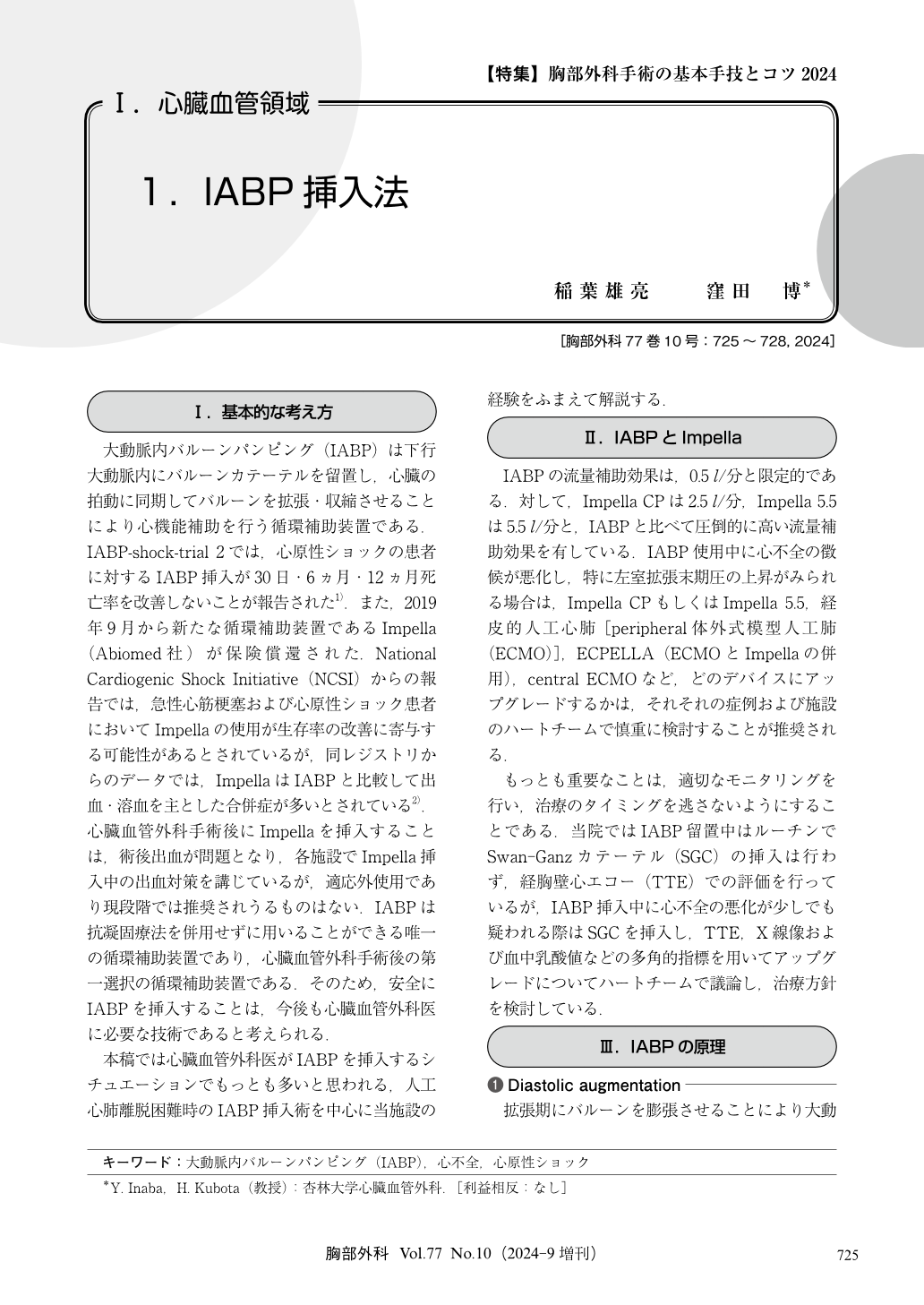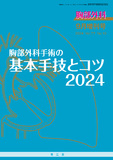Japanese
English
- 有料閲覧
- Abstract 文献概要
- 1ページ目 Look Inside
- 参考文献 Reference
大動脈内バルーンパンピング(IABP)は下行大動脈内にバルーンカテーテルを留置し,心臓の拍動に同期してバルーンを拡張・収縮させることにより心機能補助を行う循環補助装置である.IABP-shock-trial 2では,心原性ショックの患者に対するIABP挿入が30日・6ヵ月・12ヵ月死亡率を改善しないことが報告された1).また,2019年9月から新たな循環補助装置であるImpella(Abiomed社)が保険償還された.National Cardiogenic Shock Initiative(NCSI)からの報告では,急性心筋梗塞および心原性ショック患者においてImpellaの使用が生存率の改善に寄与する可能性があるとされているが,同レジストリからのデータでは,ImpellaはIABPと比較して出血・溶血を主とした合併症が多いとされている2).心臓血管外科手術後にImpellaを挿入することは,術後出血が問題となり,各施設でImpella挿入中の出血対策を講じているが,適応外使用であり現段階では推奨されうるものはない.IABPは抗凝固療法を併用せずに用いることができる唯一の循環補助装置であり,心臓血管外科手術後の第一選択の循環補助装置である.そのため,安全にIABPを挿入することは,今後も心臓血管外科医に必要な技術であると考えられる.
With the advent of the Impella, the options for mechanical circulatory support in cardiogenic shock have expanded. However, the intraaortic balloon pumping (IABP) remains the first-line choice for circulatory support devices. Cardiovascular surgeons must be proficient in the principles, indications, and management of IABP. Generally, IABP insertion is performed by interventional cardiologists under radiofluoroscopic guidance. In cases of difficulty weaning from cardiopulmonary bypass during cardiac surgery, IABP insertion must be performed by cardiovascular surgeons under transesophageal echocardiography (TEE) guidance. This paper focuses on describing a safe method for IABP insertion under TEE guidance, based on the experiences at our institution.

© Nankodo Co., Ltd., 2024


